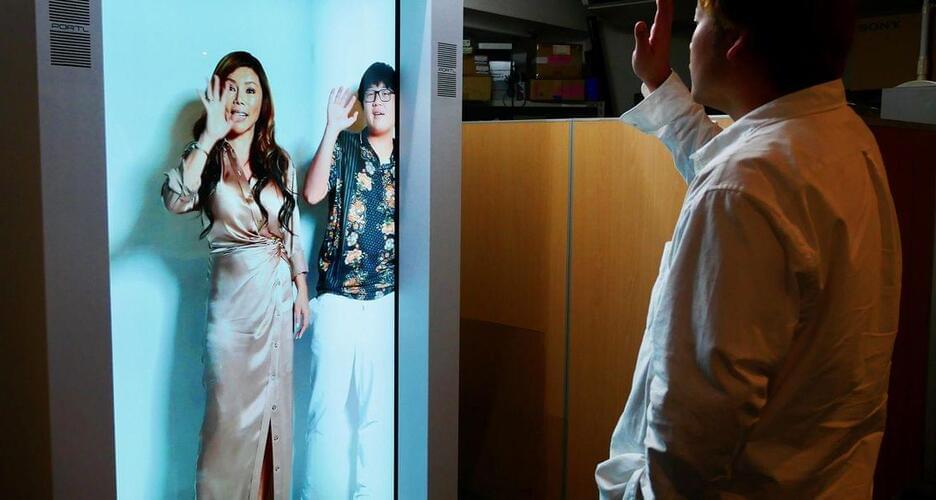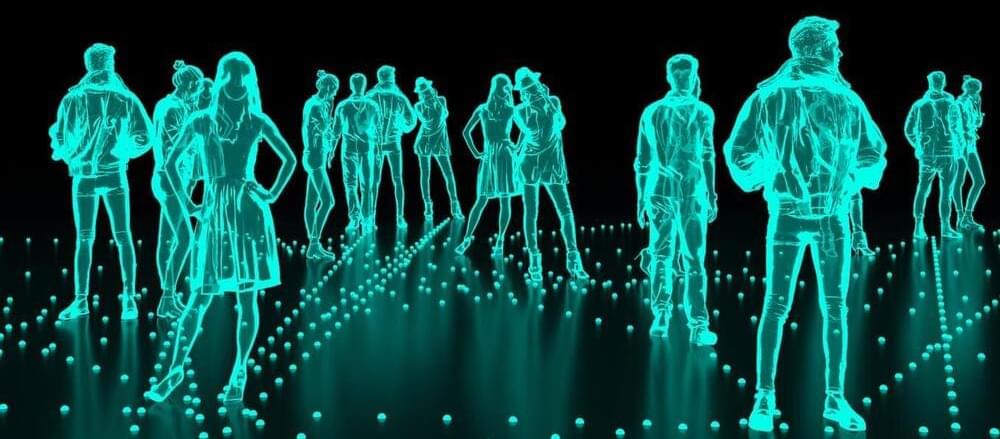The coronavirus pandemic and travel bans have accelerated interest in holographic communication.


Smartphones have become old technology by now and is soon going to be replaced by the next big thing. Vuzix has created the first lightweight Smart AR Glasses that can project holograms at high contrast while still looking like regular glasses.
The Vuzix next generation smart glasses feature futuristic micro-LED display technology to project augmented reality images onto the glasses. You can interact with virtual objects and more. Companies like Apple and Facebook will soon follow with their own variations of AR Glasses due to them soon replacing smartphones as the main medium of interaction as they phones become obsolete.
–
If you enjoyed this video, please consider rating this video and subscribing to our channel for more frequent uploads. Thank you! smile
–
#vuzix #smartphones #augmentedreality
https://youtube.com/watch?v=1_Mcp-YjPmQ&feature=share
This video gives and overview of human neuroscience and applies it to the design of an artificial general intelligence named Eta.
Go to www.startengine.com/orbai to own shares in the future of AI.
Check out https://www.orbai.ai/about-us.htm for details on the company, tech, patents, products and more.
What we usually think of as Artificial Intelligence today, when we see human-like robots and holograms in our fiction, talking and acting like real people and having human-level or even superhuman intelligence and capabilities — is actually called Artificial General Intelligence (AGI), and it does NOT exist anywhere on earth yet. What we do have is called Deep Learning, that has fundamental limitations that will not allow it to become AGI.
For an AI to pass the threshold of human intelligence, and become an artificial general intelligence requires an AI to have the ability to see, hear, and experience its environment. It needs to be able to learn that environment, to organize it’s memory non-locally and store abstract concepts in a distributed architecture so it can model it’s environment, events, and people in it.
It needs to be able speak conversationally and interact verbally like a human, and be able to understand the experiences, events, and concepts behind the words and sentences of language so it can compose language at a human level.
It needs to be able to solve all the problems that a human can, using flexible memory recall, analogy, metaphor, imagination, intuition, logic and deduction from sparse information.
This article is an installment of The Future Explored, a weekly guide to world-changing technology. You can get stories like this one straight to your inbox every Thursday morning by subscribing here.
Holograms have been a staple of science fiction for centuries, but now they may be on the verge of reality thanks to PORTL, a startup based in Los Angeles.
How it works: The startup has designed large, vending-machine-sized booths that they call “PORTL Epic” to generate real-time, life-size holograms. 100 of these booths are currently located all around the world from Abu Dhabi to Miami.

The iconic Princess Leia hologram scene in the original Star Wars movie in 1978 did much to whet our technology appetite for this futuristic form of communication. In 2012 in the real world, the ground-breaking telepresence resurrection of Tupac Shakur at the Coachella music festival wowed the audie.
Forget science fiction — Silicon Valley start-up Light Field Lab has created a hologram so real that I could put my hand right through it.
Like us on Facebook: https://www.facebook.com/cnet.
Follow us on Twitter: https://www.twitter.com/cnet.
Follow us on Instagram: http://bit.ly/2icCYYm.
Follow us on TikTok: https://vm.tiktok.com/ZMd2h6yac/
We got a sneak peek at a hologram chameleon and wristwatch from San Jose-based Light Field Lab, which expects companies to begin debuting large-scale versions of its holographic display next year.
I hope we get the hologram interfaces depicted too.
It’s becoming clear that aging is just as curable as other diseases such as the cold or a broken bone. Advancements in biotechnology now allow for targeted gene therapy and supplements to be invented that can both stop aging and even reverse the aging process through new Longevity Technology. The field of Longevity has expanded and evolved a lot during the past few years and have invented new treatments for diseases of old people which could increase the average lifespan of people by a ton according to the leading scientists such as David Sinclair and Aubrey De Grey. Anti Aging Supplements such as Metformin and NAD+, NMN are just the start.
–
Every day is a day closer to the Technological Singularity. Experience Robots learning to walk & think, humans flying to Mars and us finally merging with technology itself. And as all of that happens, we at AI News cover the absolute cutting edge best technology inventions of Humanity.
If you enjoyed this video, please consider rating this video and subscribing to our channel for more frequent uploads. Thank you! smile
–
TIMESTAMPS:
00:00 A new Benchmark in Longevity.
01:04 Living longer lives today.
03:13 How Genomics will extend our lifespans.
05:19 What are the societal concerns?
07:58 Last Words.
–
#longevity #immortality #treatment


The TV show “Star Trek: The Next Generation” introduced millions of people to the idea of a holodeck: an immersive, realistic 3D holographic projection of a complete environment that you could interact with and even touch.
In the 21st century, holograms are already being used in a variety of ways such as medical systems, education, art, security and defense. Scientists are still developing ways to use lasers, modern digital processors, and motion-sensing technologies to create several different types of holograms which could change the way we interact.
My colleagues and I working in the University of Glasgow’s bendable electronics and sensing technologies research group have now developed a system of holograms of people using “aerohaptics,” creating feelings of touch with jets of air. Those jets of air deliver a sensation of touch on people’s fingers, hands and wrists.